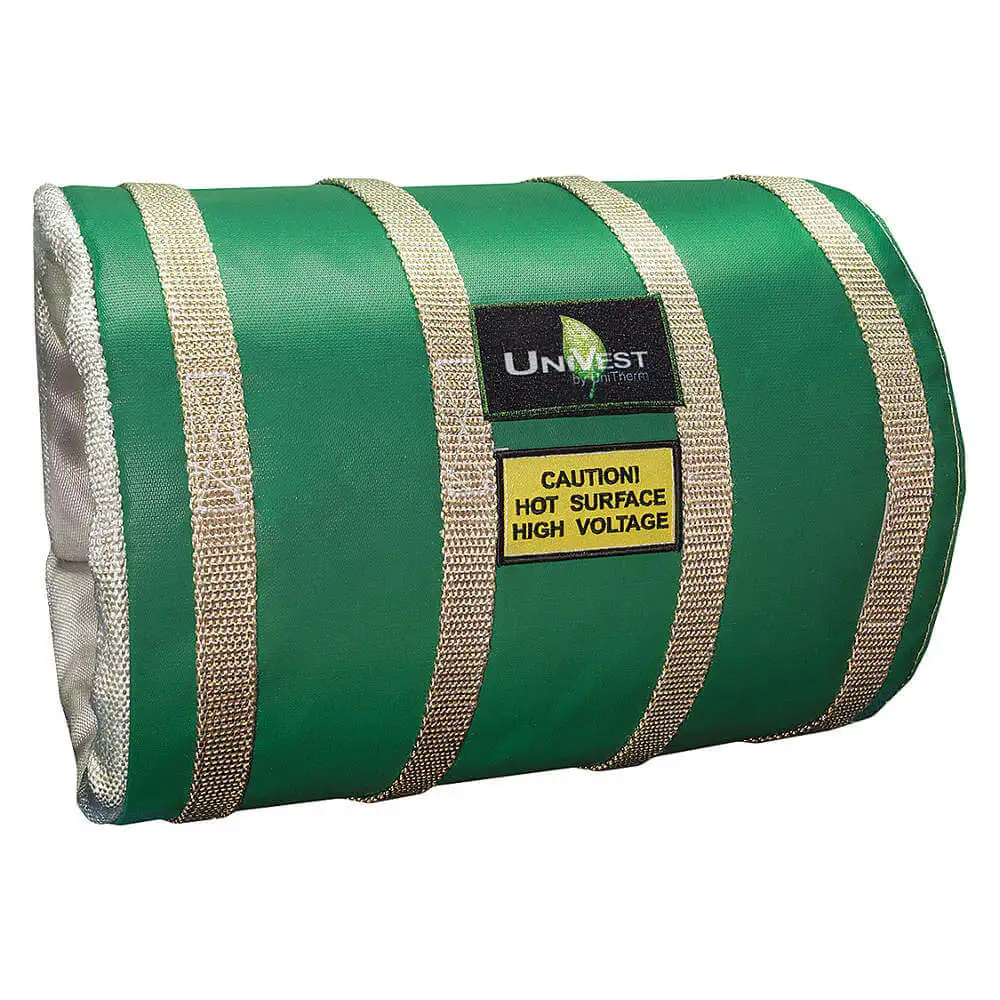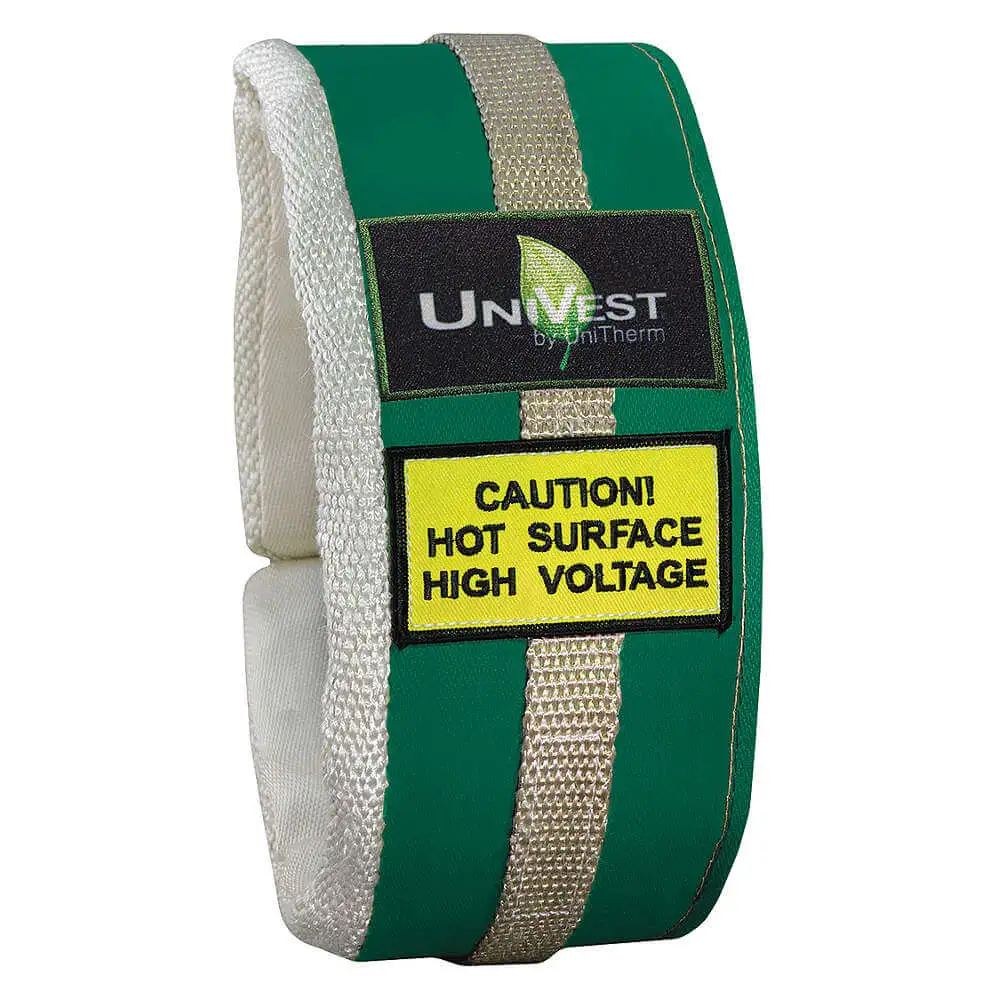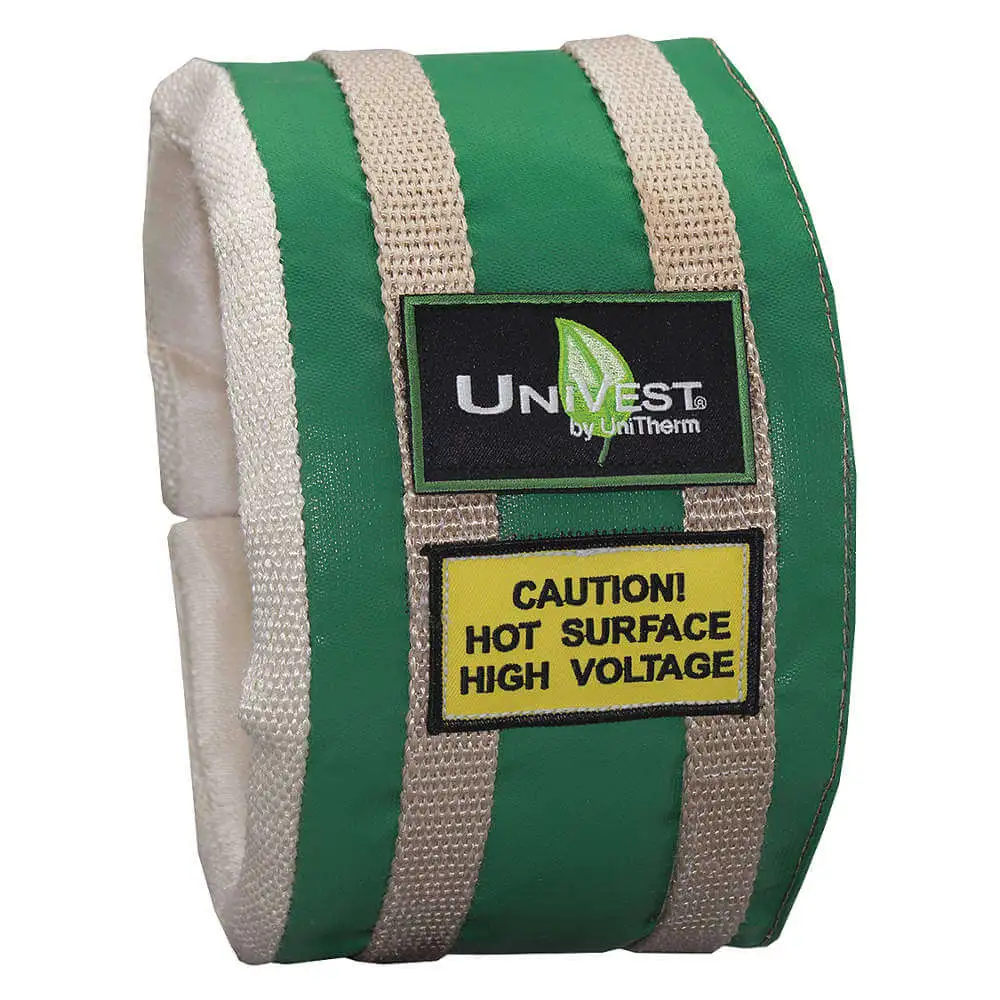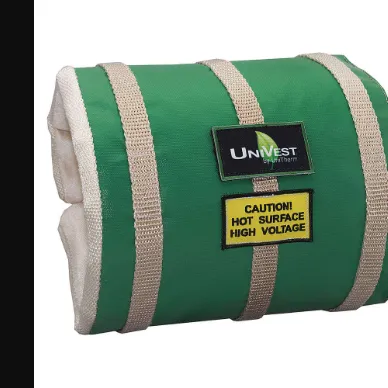Unitherm 1916 pipe insulation jacket is ideal for high-temperature applications for personnel protection, insulation and energy conservation due to faster machine startup.
Features:
- The insulation jacket is composed of silica cloth (lower hot layer), ceramic fibre (middle layer) and PTFE fibreglass cloth (upper cold layer), creating excellent insulation and the ability to withstand temperatures up to 2000 degrees F. These materials can be removed when needed and are reusable.
- It includes fibreglass straps and nickel steel roller buckles to allow easy adjustment or added extension to provide a secure fit.
- It can be used to insulate barrels, extruders, dies, hoses, pipes, cylinders or other equipment.
Standards and Approvals:
Frequently Asked Questions:
Q. What is the use of fibreglass straps and buckles?
A. Straps are carefully spun using fibreglass yarns to add strength & flexibility, resistance to most chemicals and the ability to withstand temperatures up to 1000 F. These qualities make them compatible with UniVest insulation jackets or throw blankets.
Q. What is the advantage of ceramic fibre?
A. Ceramic fibre is used in the insulation jacket to offer excellent corrosion resistance, fire protection, sound absorption, tensile strength and thermal stability. This material can handle a maximum temperature of 2300 degrees F and accepts a wide range of hot face and backup insulation applications in furnaces, kilns & more, requiring high-temperature heat containment.
Q. How to select the right size of UniVest insulation jacket for the machine?
A.
- Take a measuring tape and measure either the circumference or diameter of the area to be insulated.
- Measure the desired width of the application that needs insulation.
- Using the measurements, find the appropriate UniVest insulation jacket.
 Change Country
Change Country




